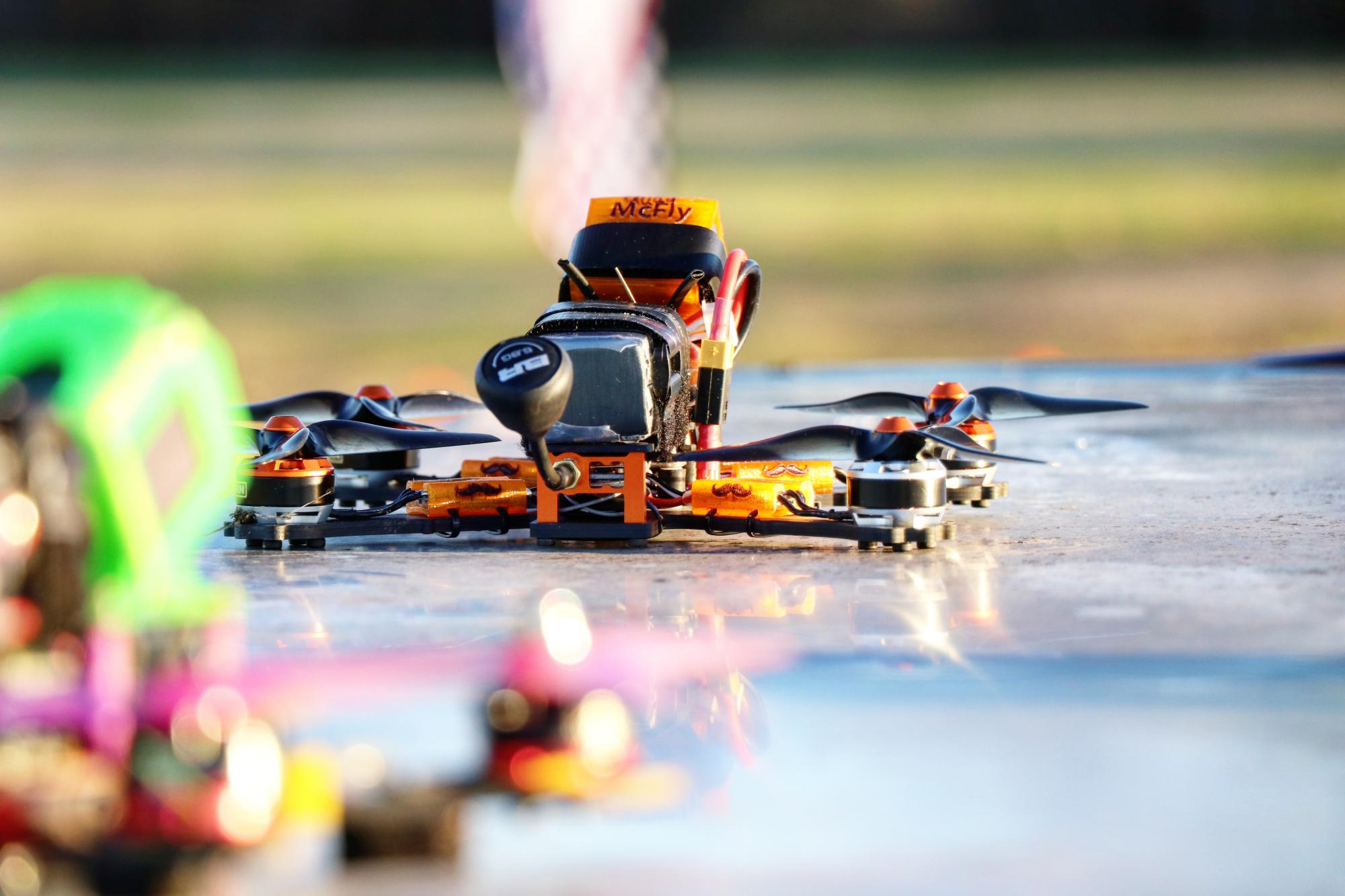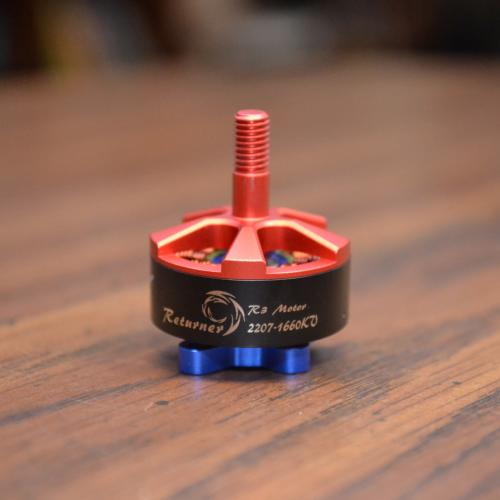- Home >
- Results >
- Motor Tests >
- Low KV >
- Brother Hobby Returner R3 2207-1660KV
The Returner R3 is a solid motor choice, especially for those wanting to spend a little bit less for top tier flight performance. Here we take a look at the 2207-1660KV version.
Check out the full list of motors in this series here
Summary
The Brother Hobby Returner R3 2207-1660KV was sent over by Catalyst Machineworks awhile back, and we are finally getting it on the test stand. It is a well known motor, as it has been around since the start of the Returner line. It is light on the scale for a 2207 motor at 30.5g, and light on the wallet, while still putting out top tier performance. The weight savings comes from using an aluminum prop shaft, 3mm diameter motor shaft, 3x8x4 bearings, and a retaining clip underneath. The lighter components do make the motor less durable than its R4 and R6 brethren, but on a grass covered race track it’s really not bad at all. It tends to be more of a concern if you are flying over concrete or on a heavy gopro hauler, which carries more momentum into a crash.
Results
Somewhat unexpected was the fact that this motor landed in 2nd place on the max thrust rankings among the other 6S tests in the database so far. That is based on DAL Cyclone 5046C, which I use a lot for relative comparisons, since there is a long history of motors to compare to, and it tends to make motors work hard. Really though, it is as near as makes no difference to the Emax RSII 2306-1700KV in terms of thrust, but slightly less efficient at full throttle compared to that motor. The little bit larger stator is basically helping it reach a higher RPM under load, even though the KV is a bit less. That amount of load is pretty unrealistic in the air though, so I tend to look at how the motors compare at around 600g of thrust if I want to look at efficiency. In that scenario they are literally equal at 3.13 g/W. In fact, almost all of the 6S tests completed so far are showing the same efficiency at 600g.
As far as prop choice goes, this motor is one that likes a bit more pitch than most of the other motors wound for 6S, because of its large stator and slightly lower KV. It’s certainly not a very low KV though, so don’t expect your batteries to be happy if you just slap on the most aggressive piece of plastic you can.
Side note: The Lumenier 5x3.7x4 data looks weird because it honked like a pissed off goose under heavy load. Take a look at the lower throttle data if you are specifically curious about how it performed on this motor.










































